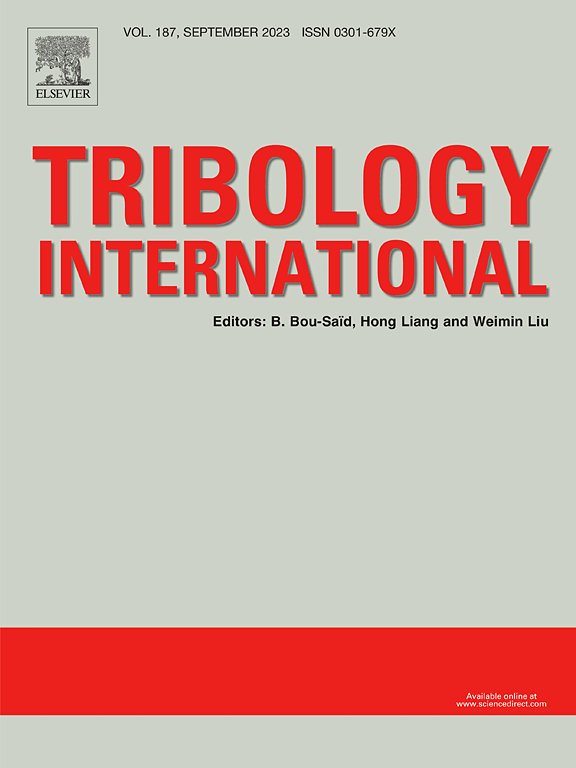三维Cf-SiC复合材料在高温下的机械降解
IF 6.1
1区 工程技术
Q1 ENGINEERING, MECHANICAL
引用次数: 0
摘要
碳碳化硅(Cf-SiC)复合材料由于其独特的机械和摩擦学性能组合,在高温下的应用越来越广泛。由于应用领域的不同,这些复合材料在使用过程中受到各种降解机制的影响。开展本研究的目的是了解和比较(Cf-SiC)复合材料在冲击磨损、环境、高温和高超声速条件下的往复磨损和材料去除机制。结果表明,在冲击磨损过程中,材料通过裂纹的形成和扩展被去除。冲击磨损时,当试验温度从环境温度变化到773 K时,Cf-SiC复合材料的耐磨性在正常冲击时为48.47 ~ 41.88,在斜冲击时为7.68 ~ 9.59。光滑的自润滑摩擦层的形成控制了往复磨损过程中的摩擦。在较高的负荷和较高的温度下,会形成碳尘。低负荷时摩擦系数在0.4 ~ 0.6之间。在更高的负载和773 K时,它增加到很高的值。在高超声速条件下,主要的材料去除机制是机械侵蚀,但也会发生边缘烧蚀。600 秒暴露在高超音速条件下,总材料损失为6.4 gm。本文章由计算机程序翻译,如有差异,请以英文原文为准。
Mechanical degradation of 3D Cf-SiC composites at elevated temperature
Carbon SiC (Cf-SiC) composites are finding increasing applications at elevated temperature because of their unique combination of mechanical and tribological properties. These composites are subjected to various degradation mechanisms during usage because of diverse field of applications. The intention of undertaking the present investigation is to understand and compare the material removal mechanisms of (Cf-SiC) composites subjected to impact abrasion, reciprocating wear at ambient and elevated temperature and hypersonic conditions. The results suggest that material is removed through crack formation and propagation during impact abrasion. As the test temperature is changed from ambient condition to 773 K during impact abrasion, the wear resistance of Cf-SiC composites varies from 48.47 to 41.88 under normal impact and from 7.68 to 9.59 during oblique impact. The formation of smooth self-lubricating tribo-layer governs friction during reciprocating wear. At higher load and higher temperature the formation of carbon dust occurs. The friction coefficient varies between 0.4 and 0.6 at low load. It increases to a high value at higher load and at 773 K. The main material removal mechanism during hypersonic condition is mechanical erosion although marginal ablation also takes place. Total material loss is 6.4 gm for 600 s exposure to hypersonic condition.
求助全文
通过发布文献求助,成功后即可免费获取论文全文。
去求助
来源期刊

Tribology International
工程技术-工程:机械
CiteScore
10.10
自引率
16.10%
发文量
627
审稿时长
35 days
期刊介绍:
Tribology is the science of rubbing surfaces and contributes to every facet of our everyday life, from live cell friction to engine lubrication and seismology. As such tribology is truly multidisciplinary and this extraordinary breadth of scientific interest is reflected in the scope of Tribology International.
Tribology International seeks to publish original research papers of the highest scientific quality to provide an archival resource for scientists from all backgrounds. Written contributions are invited reporting experimental and modelling studies both in established areas of tribology and emerging fields. Scientific topics include the physics or chemistry of tribo-surfaces, bio-tribology, surface engineering and materials, contact mechanics, nano-tribology, lubricants and hydrodynamic lubrication.
 求助内容:
求助内容: 应助结果提醒方式:
应助结果提醒方式:


